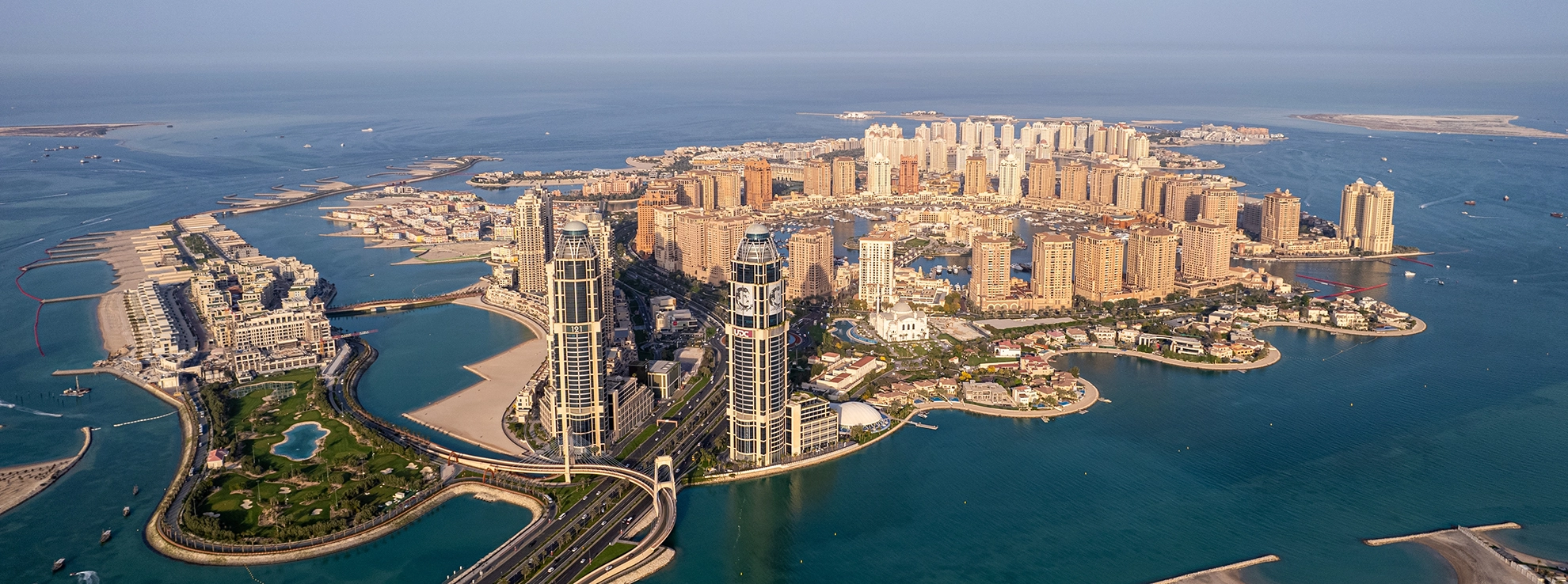
Schengen Tourist Visa
What is a Schengen Tourist Visa?
The Schengen tourist visa is an official travel document that permits the holder free movement across all internal air and sea borders within the Schengen Area. It is also known as a “short-stay visa.” Many foreign nationals planning to travel to the Schengen Area for tourism are required to obtain a Schengen Tourist Visa which permits the holder to engage in tourism, business, or family visits that last up to 90 days.
Millions of travelers enter the Schengen Area each year for tourism. Consisting of 29 countries, including nearly all European Union (EU) countries, except for Ireland and Cyprus, and some non-EU countries such as Norway, Iceland, Switzerland, and Liechtenstein, the Schengen Area is one of the busiest tourist destinations in the world.
After obtaining a Schengen tourist visa, travelers can enjoy the diverse cities, cuisine, and incredible natural beauty across the Schengen Area for up to 90 days within a 180-day period. The 180-day period of validity begins the day the traveler enters the Schengen Area.
Schengen tourist visas are available as single-entry or multiple-entry. A multiple-entry visa allows the holder to exit and reenter the Schengen Area numerous times during the 180-day period, provided they do not remain in the Area for more than 90 days. All travelers holding a Schengen tourist visa must be sure to exit the Schengen Area before their visa expires to avoid any legal consequences.
Who Needs a Schengen Tourist Visa?
Nationals of many countries worldwide are eligible to obtain a Schengen tourist visa to experience all the wonderful sights that Europe hast to offer prior to entering the Schengen Area. This includes most countries in Africa, the Middle East, and Asia. The following is the full list of countries whose nationals must obtain a Schengen tourist visa:
Afghanistan, Algeria, Angola, Armenia, Azerbaijan, Bahrain, Bangladesh, Belarus, Belize, Benin, Bhutan, Bolivia, Botswana, Burkina Faso, Burma/myanmar, Burundi, Cambodia, Cameroon, Cape Verde, Central African Republic, Chad, China, Comoros, Congo, Cote d'ivoire, Cuba, Democratic Republic of Congo, Djibouti, Dominican Republic, Ecuador, Egypt, Equatorial Guinea, Eritrea, Eswatini, Ethiopia, Fiji, Gabon, Gambia, Ghana, Guinea, Guinea-Bissau, Guyana, Haiti, India, Indonesia, Iran, Iraq, Jamaica, Jordan, Kazakhstan, Kenya, Kuwait, Kyrgyzstan, Laos, Lebanon, Lesotho, Liberia, Libya, Madagascar, Malawi, Maldives, Mali, Mauritania, Mongolia, Morocco, Mozambique, Namibia, Nauru, Nepal, Niger, Nigeria, North Korea, Oman, Pakistan, Papua New Guinea, Philippines, Qatar, Russia, Rwanda, Sao Tome and Principe, Saudi Arabia, Senegal, Sierra Leone, Somalia, South Africa, South Sudan, Sri Lanka, Sudan, Suriname, Syria, Tajikistan, Tanzania, Thailand, Togo, Tunisia, Turkey, Turkmenistan, Uganda, Uzbekistan, Vanuatu, Vietnam, Yemen, Zambia, Zimbabwe.
The EU currently has visa-free agreements with 61 non-EU countries, two special administrative regions (Hong Kong and Macao), and one territorial authority (Taiwan). Countries with visa-free agreements include the United States, Canada, Australia, Brazil, Mexico, Japan, and the United Kingdom. Other countries, like Azerbaijan, Belarus, Moldova, and Georgia, have visa facilitation agreements with the EU, which simplify the process of obtaining an EU travel visa.
Required Documents
All travelers seeking to obtain a Schengen tourist visa must adhere to the Schengen visa requirements in order for their application to be processed successfully.
The following are the documents required for the tourist Schengen visa application process:
A valid passport
The applicant’s passport must be valid for at least three (3) months after the final date of departure from the Schengen Area. For holders of a multiple-entry visa, this is the date of departure from the last country visited.
A complete visa application form
The Schengen tourist visa application form can be found online and should be completed with all the relevant personal, travel, and contact details
An ICAO-compliant photograph
The ICAO guidelines are detailed. For example, they stipulate that photographs must be at most six (6) months old, 35-40 mm wide, and capture the head and shoulders of the applicant so that the face takes up 70-80% of the photo. Other guidelines will apply and can be found on the official website
Valid medical insurance
All applicants must have medical insurance that is valid for the duration of their stay in the Schengen Area. Insurance should cover any medical appointments or expenses, and more serious cases requiring hospitalization or repatriation.
Supporting documents
While these documents may vary depending on the applicant’s unique circumstances, they generally consist of documents that show the applicant’s purpose of staying in the Schengen Area. This might include proof of financial subsistence and proper accommodation while in the Area. Other supporting documents may include proof of intent to return to the country of origin within the allotted validity period for the tourist visa. It is recommended that the applicant provide documents showing ties to their home country such as proof of family members, a job, properties, or an established business.
Other requirements for the Schengen tourist visa might apply depending on the applicant’s nationality, their situation, and the purpose of their trip to the Schengen Area. There may also be slight differences in the required materials depending on the specific processes of the embassy or consulate of the country they plan to visit. More information about this can be found below.
It’s important for applicants to verify the list of required documents and materials with the local embassy, consulate, or visa application center where they plan to submit the application.
Application Process
Fortunately, for those who need to apply for a Schengen Area tourist visa in advance, the process is fairly straightforward and can be completed within as little as 15 days.
The following is the basic process all applicants will follow to complete the Schengen tourist visa application:
- Complete the visa application form
The Schengen tourist visa application form can be found online and should be completed to the best of the applicant’s ability. All sections must be completed diligently and accurately.
- Gather all required materials
Applicants must ensure they have all the required documents including a valid passport, an ICAO-compliant photograph, and any required supporting documents demonstrating that their purpose of stay is tourism. Required materials may vary depending on the location of the application submission. Country-specific requirements can be found online on the various official websites.
- Schedule an appointment (if applicable)
Most applicants will be required to schedule and attend an official appointment at the embassy, consulate, or visa application center where they will submit their application. It’s important to bring all the required documents to this appointment and be on time.
- Pay the visa fees
Visa fees are a requirement for processing any Schengen Tourist visa. The fees will vary slightly for some nationalities. Information on all fees can be found below. The method of payment will vary depending on the embassy, consulate, or visa application center where the application is submitted, so applicants should be prepared with the correct form of payment.
After submitting your application
- Await visa processing
During the processing period, applicants should be prepared to provide any additional information or documents as requested by the immigration authorities or visa center team.
- Receive the Schengen tourist visa
Once the Schengen tourist visa is received, the traveler can proceed with their travel plans to Europe. They must ensure they enter the Schengen Area through the country they applied through or maintain their travel plans if visiting several countries.
Where to Apply?
Applications for the Schengen Tourist Visa must be submitted at the embassy or consulate of the country the applicant intends to visit. As a rule of thumb, if the travel itinerary includes more than one country, the applicant will submit their application at the embassy or consulate of the country where they plan to stay the longest. If they plan to visit multiple countries for the same duration in each place, they can submit their application to the embassy or consulate of the first country they will travel to.
Alternatively, applicants may be required to submit their application and supporting documents at a visa application center (VAC) or visa service center in their home country. Some applicants may be able to complete their application online, depending on the country where they plan to submit. This will depend on the country in which the applicant legally resides and the systems in place in that location.
It’s important for applicants to verify the correct method of application submission before moving forward with the process.
When to Apply?
The application for the Schengen tourist visa must be submitted at least 15 days before the intended date of arrival in the Schengen Area. Applicants who want to submit their application materials early can do so up to six (6) months before traveling.
In most cases, the applicant will attend a visa appointment to submit their application. Otherwise, they may be able to complete the process online. Either way, it is advised to begin the process well in advance of the intended date of travel to avoid any unforeseen delays.
Visa Processing Time
The Schengen tourist visa processing time varies depending on the applicant’s unique situation, nationality, and the purpose of their stay. However, the typical processing time for the visa application is around 15 days. Processing can take up to 45 days in some cases where more information or documents are needed from the applicant.
In some cases, family members of EU/EEA citizens may be eligible for an accelerated visa pathway, free of charge, under the Free Movement Directive.
All applicants are advised to apply well in advance of their travel date to avoid any delays in processing. Applications can be submitted up to six (6) months before the intended travel date. The latest an application can be submitted for the Schengen tourist visa is 15 days to allow time for processing.
Schengen Tourist Visa Fees
The Schengen visa cost will vary depending on the age and nationality of the applicant. For all non-EU national adults, the fee is 80€. The fee for children aged 6-12 is 40€.
Nationals from countries that have visa facilitation agreements such as Armenia, Belarus, and Moldova, must pay 35€.
Finally, applicants from Cabo Verde will uniquely pay 60€ for their Schengen tourist visa.
Additional fees may apply depending on where the applicant submits their application documents. Visa application centers in some locations may collect a fee. There will likely be additional costs for printing, taking photographs, or other administrative fees.
FAQ
No, working, studying, or living in the Schengen Area is not permitted with a Schengen tourist visa. This travel permit is designed for short-term stays for tourism, business, or visiting family for up to 90 days. If you want to stay in the Schengen Area for more than 90 days, you can apply for another visa or permit for the relevant country.
Holders of a Schengen tourist visa are eligible to visit 29 European countries including popular tourist destinations like France, Italy, Spain, Greece, Germany, and Portugal. It also includes non-EU countries like Norway and Iceland. All countries in the Schengen Area allow travelers to move freely within and between their borders.
With a Schengen tourist visa, you can stay in the Schengen Area for up to 90 days within any 180-day period. It's important to adhere to this limit to avoid overstaying your visa, which could lead to penalties or difficulties in future travels.
Yes, you can visit multiple Schengen countries with a single tourist visa. The visa allows you to travel freely within the Schengen Area, so you can visit any of the 29 member countries during your permitted stay. However, it's crucial to specify your main destination when applying for the visa if you plan to visit multiple countries with different durations of stay.
If you hold a valid residence permit issued by one of the Schengen countries, you do not need a Schengen tourist visa for short stays within the Schengen Area. A resident of any Schengen country is free to travel within the Schengen Area without a visa.


